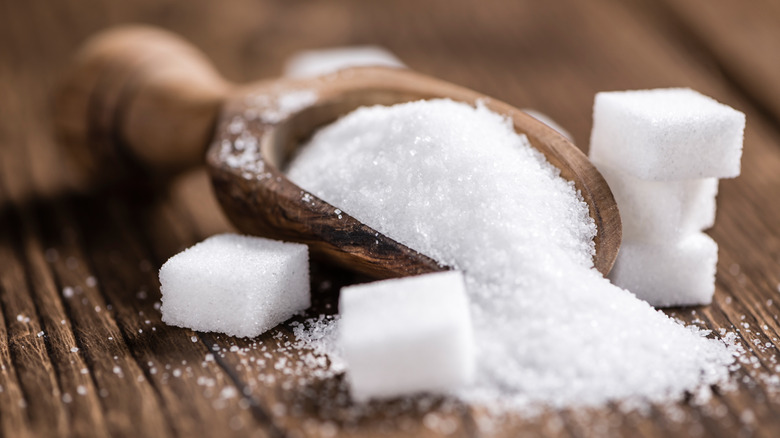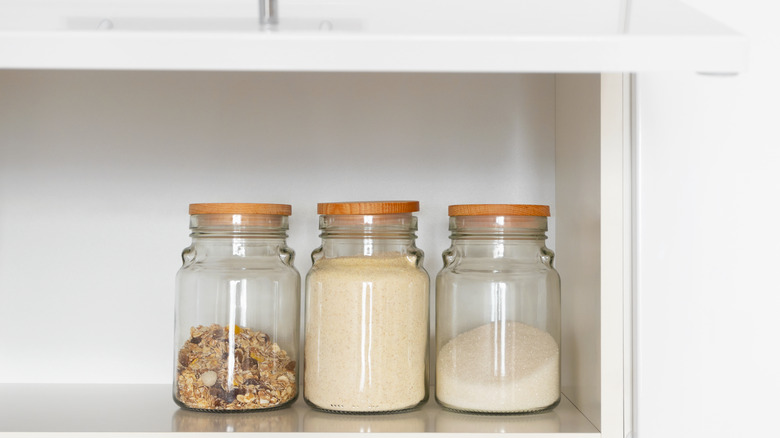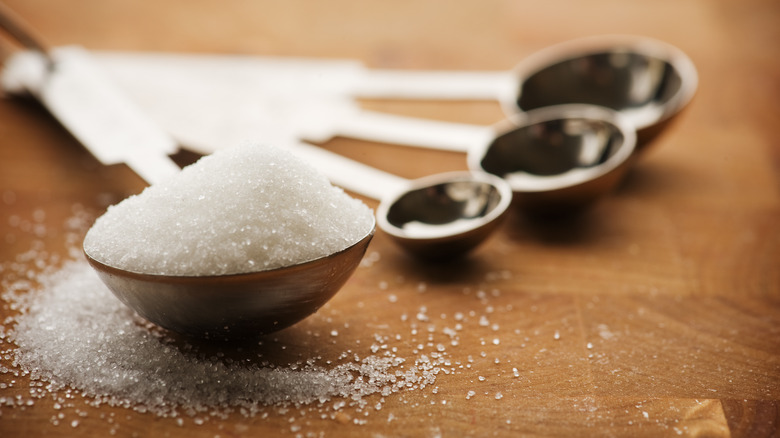How To Tell When Your Sugar Has Gone Bad
For home cooks who love baking, making jams and jellies, or often prepare simple syrup for cocktails, it can be easy to burn through a bag of white sugar. The rest of us, however, might keep the same bag of sugar for so long that we wonder when it got into the kitchen cabinet in the first place. If you fall into the latter camp, don't fear — chances are, your sugar has not spoiled.
The kind of granulated sugar available at most grocery stores can last indefinitely, as long as it has been stored properly. When it comes to quality, however, it's best to use up a bag of sugar within two years of opening it. While it's generally still safe to consume after this time, the sugar may undergo textural changes that affect the dishes you use it in, which is big problem in baking recipes, where the consistency of every ingredient matters. You can tell if sugar has gone bad — or at least, bad for baking purposes— if it has hardened into a solid block or has developed hard, stubborn lumps or crystals.
Where and how to store sugar
The best place to store sugar depends on what kinds of sugar you like to stock in your kitchen. As with other dry kitchen staples, like yeast, you may be surprised about the ideal location to keep your sugar, and the real expiration date. Raw sugar, brown sugar, and sugar syrups will not last as long as plain white sugar, and each product has its own ideal storage conditions. For standard, refined white sugar, it's best to make space for it in the pantry or another cool, dry area of the kitchen.
While white sugar is resistant to microbial growth and won't spoil without refrigeration, exposure to moisture can have a negative impact on it in terms of quality. Leaving your sugar in its paper bag — or worse, leaving the bag open — can cause it to change in texture. Store sugar in an airtight container, rather than its original paper or plastic packaging. This will prevent it from absorbing any humidity or odors in the air. The former can cause sugar to become hard and lumpy, while the latter might impart an off flavor that can ruin your coffee, tea, desserts, and more.
What to do with old sugar
If you find yourself with a bag of sugar that's well past its prime and has turned clumpy, you don't have to throw it out. There are plenty of ways to make good use of "bad" sugar, so long as it tastes fine and it's merely the texture that has changed. One option is to prepare simple syrup for batched cocktails. Once old, lumpy sugar has been dissolved in water, no one will ever know the difference, and you'll have an easy and convenient way to make cocktails for a crowd.
Lumpy sugar shouldn't be mixed directly into baked goods like cookies and cakes, as it can disrupt the texture of the whole dessert. However, you can use old sugar in baking projects in an unexpected way — as a pie weight. When blind baking a pie crust, you can layer the bottom with parchment paper and top with hard sugar to keep the crust from losing its shape. Even better, the sugar will toast in the oven and gain a delicious caramel-like flavor. It can then be reused for another purpose, truly giving your old sugar new life. Outside the kitchen, sugar can also be put to work in many other ways. Try breaking up lumpy sugar and using it as part of a natural body scrub.



